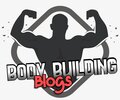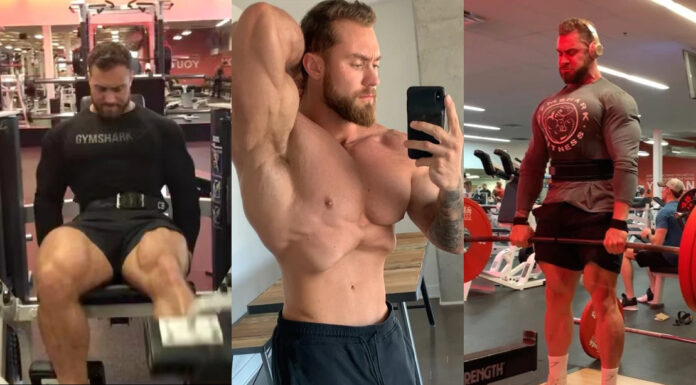Chris Bumstead, popularly known as CBum, is the most prominent figure in contemporary bodybuilding. Bumstead is considered the face of this division and has won the Classic Physique Mr. Olympia title several times thanks to his beautiful physique, flawless symmetry, and unparalleled conditioning.
Fans from around the world admire not just his stage presence but also his dedication to training and nutrition. Chris exemplifies the golden-era style, which includes flowing proportions, a tight waist, and broad shoulders, in contrast to some mass monsters. To achieve this, his workout routines and nutrition are carefully structured for muscle growth, conditioning, and balance.
We’ll dissect Chris Bumstead’s exercise regimen and diet in this blog so you can comprehend the ideas underlying his extraordinary success.
The Training Philosophy of Chris Bumstead
CBum advocates a mix of intensity training, isolation exercises, and heavy compound lifts. A few points can be used to summarize his philosophy:
- Concentrate on Form and Mind-Muscle Connection: Each repetition is executed with composure and concentration.
- Progressive Overload: To promote growth, he keeps increasing the weight, repetitions, or intensity.
- Classic Aesthetics over Pure Mass: Chris values proportion and detail over simply getting big.
- Variety and Intensity: To fully engage each muscle group, he incorporates drop sets, supersets, and various angles into his workouts.
The Workout Split of Chris Bumstead
Chris typically works out five or six days a week, focusing on particular muscle groups. His training is designed to give each muscle a hard hit while allowing for recovery.
Day 1: Exercise for the Back
- Deadlifts: 4 sets × 8–10 repetitions
- Barbell Rows: 4 sets × 10–12 repetitions
- Pull-ups (if at all possible, weighted) 4 sets × 10–12 repetitions
- Lat pulldowns: 4 sets of 12–15 repetitions
- 3 sets × 12–15 repetitions of seated cable rows
- Pullover dumbbells: 3 sets × 12–15 reps
Focus: Keeping the waist tight while adding width and thickness.
Day 2: Biceps & Chest
- 4 sets of 8–10 repetitions of the Incline Barbell Press
- Flat Dumbbell Press – 4 sets × 10–12 reps
- Dumbbell Fly Incline: 4 sets × 12–15 reps
- 3 sets × 12–15 repetitions for the machine chest press
- Barbell curl: 4 sets × 10–12 repetitions
- Hammer curl with dumbbells: 3 sets × 12 reps
- Concentration Curl – 3 sets × 12–15 reps
Focus: Detailed arms and a fuller chest.
Day 3: Glutes & Hamstrings
- Romanian Deadlift: 4 sets of 10–12 repetitions
- Lying Leg Curls – 4 sets × 12–15 reps
- Three sets of twenty steps for walking lunges
- Hip Thrusts – 3 sets × 12–15 reps
- Leg curls while seated: 3 sets × 12–15 reps
Focus: Gluteal strength, hamstring thickness, and lower body balance.
Day 4: Triceps and Shoulders
- Military Press: 4 sets of 8–10 repetitions
- Five sets of 12–15 repetitions of dumbbell lateral raises
- Front Plate Raise: 3 sets of 15 repetitions
- Rear Delt Fly: 4 sets × 12–15 repetitions using a machine or dumbbell
- Skull Crushers: four sets of ten to twelve repetitions
- Rope Tricep Pushdown: 4 sets × 12–15 repetitions
- Extension with Overhead Dumbbells: 3 sets × 12-15 reps
Emphasis: Tricep detail for full arms and round-capped shoulders.
Day 5: Calves & Quads
- Barbell Back Squats: 4 sets of 8–10 repetitions
- Leg Press: 4 sets × 12–15 repetitions
- Bulgarian Split Squats: 3 sets of 12 repetitions per leg
- Leg Extensions: 4 sets of 15–20 repetitions
- Five sets of twenty repetitions of standing calf raises
- 4 sets of 15 repetitions of seated calf raises
Focus: Detailed leg development and quad sweep.
Day 6: Active Recovery or Rest
- Mild aerobic exercise (cycling or walking)
- Mobility exercises and stretching
- Strengthening of the core
Chris knows that muscle growth occurs when the body is at rest, so he values recovery just as much as lifting.
Techniques for Training Style and Intensity
Chris Bumstead uses a number of methods to increase the intensity of his training:
- Drop Sets: Losing weight and going on without stopping.
- Supersets: Doing the same exercises back-to-back (triceps and biceps, for example).
- Time Under Tension: To optimize muscle fiber engagement, perform controlled repetitions and slower negatives.
- Variety of Angles: Applying various tools and grips to strike the muscle from various angles.
This gives CBum’s body the timeless aesthetic that characterizes it in addition to helping him gain muscle.
The Diet of Chris Bumstead
Nutrition is just as important as hard training. Chris eats a diet rich in calories and protein that is designed to help him gain muscle and maintain his leanness for competition.
Important Nutritional Concepts:
- High protein intake is necessary for both muscle growth and repair.
- Complex Carbohydrates: Give you sustained energy for vigorous exercise.
- Good Fats: Promote joint health and hormone balance.
- Micronutrients: Supplements, fruits, and vegetables for general health.
- Five to six meals a day are recommended to sustain energy and aid in recuperation.
An Example of a Chris Bumstead Meal Plan
First meal (breakfast):
- Berries and almond butter over oats
- Egg whites plus whole eggs
- Shake with protein
Second meal (mid-morning):
- Breast of chicken
- Quinoa or brown rice
- Steam-cooked veggies
Lunch, the third meal:
- Cod or salmon
- Sweet potatoes
- Kale or spinach
Pre-workout meal four:
- Turkey ground
- Rice
- The asparagus
Meal 5: Post-Workout
- Whey protein shake
- Honey-topped rice cakes
- A banana
Meal 6: Dinner
- Bison or steak
- Baked potatoes
- Broccoli
Meal 7 (Optional, before bed):
- Cottage cheese or casein protein
- Peanut butter or nuts
Chris Bumstead’s Supplements
Chris takes supplements to enhance his performance and recuperation:
- Whey Protein: Recuperation after exercise.
- Casein protein is a slow-digesting protein that helps repair muscles overnight.
- Creatine Monohydrate: Power and stamina.
- EAAs and BCAAs: Help muscles recover during exercise.
- Multivitamins: Support for micronutrients and general health.
- Fish oil supports the heart and joints.
Chris Bumstead’s Motivation and Attitude in 2022
Beyond diet and exercise, CBum’s success stems from his mentality. He frequently offers inspirational sayings regarding:
- Being consistent means turning up each day, even when you’re not feeling particularly motivated.
- Discipline: Carefully adhering to the schedule, from meals to sets.
- Balance: Attending to one’s physical and mental well-being.
- Gratitude: Appreciating the journey while striving for progress.
He maintains his position at the top year after year because of this mental toughness.
Important Lessons Learned from Chris Bumstead’s Diet and Exercise
- Train with Intensity: Pay attention to rigorous form, heavy lifts, and the relationship between the mind and muscles.
- Balance Training: Use a combination of isolation and compound exercises to work all of the major muscle groups.
- Eat Big, Eat Clean: Eat five to six meals a day, with a focus on complex carbohydrates and protein.
- Utilize Recovery Sensibly: It’s crucial to get enough sleep, stretch, and take supplements.
- Adopt the CBum Mentality: Results are driven by passion, discipline, and consistency.
In Conclusion
Building a world-class physique requires a combination of science, discipline, and passion, as demonstrated by Chris Bumstead’s exercise regimen and diet plan. While his diet plan makes sure he stays fueled, lean, and strong, his training split concentrates on appearance and proportion.
Start by learning the fundamentals if you want to train like CBum: lift weights with proper form, consume nutrient-dense foods, and maintain consistency. Along with physical changes, you’ll develop the mental toughness that distinguishes champions like Chris Bumstead.


